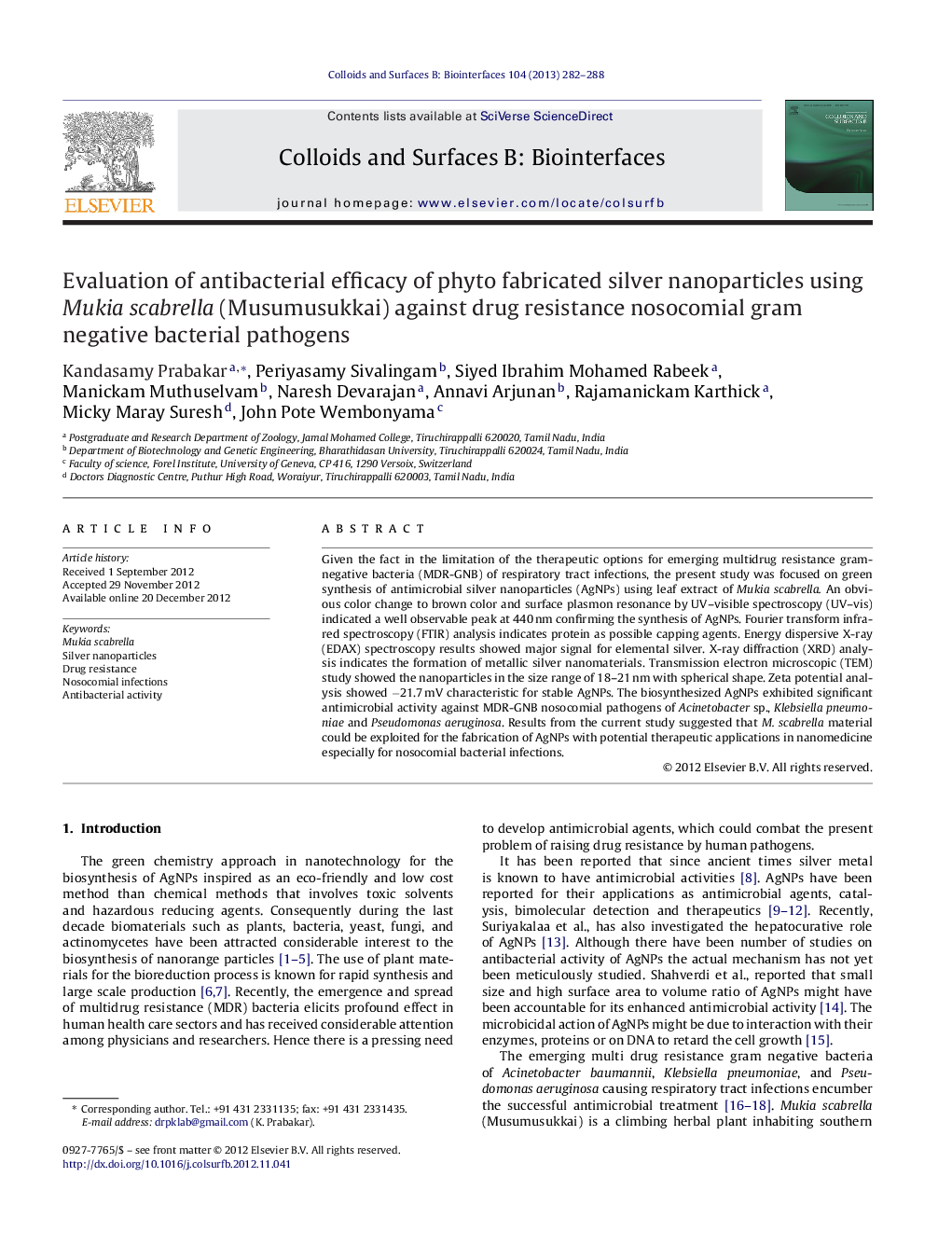| Article ID | Journal | Published Year | Pages | File Type |
|---|---|---|---|---|
| 600059 | Colloids and Surfaces B: Biointerfaces | 2013 | 7 Pages |
Given the fact in the limitation of the therapeutic options for emerging multidrug resistance gram-negative bacteria (MDR-GNB) of respiratory tract infections, the present study was focused on green synthesis of antimicrobial silver nanoparticles (AgNPs) using leaf extract of Mukia scabrella. An obvious color change to brown color and surface plasmon resonance by UV–visible spectroscopy (UV–vis) indicated a well observable peak at 440 nm confirming the synthesis of AgNPs. Fourier transform infra-red spectroscopy (FTIR) analysis indicates protein as possible capping agents. Energy dispersive X-ray (EDAX) spectroscopy results showed major signal for elemental silver. X-ray diffraction (XRD) analysis indicates the formation of metallic silver nanomaterials. Transmission electron microscopic (TEM) study showed the nanoparticles in the size range of 18–21 nm with spherical shape. Zeta potential analysis showed −21.7 mV characteristic for stable AgNPs. The biosynthesized AgNPs exhibited significant antimicrobial activity against MDR-GNB nosocomial pathogens of Acinetobacter sp., Klebsiella pneumoniae and Pseudomonas aeruginosa. Results from the current study suggested that M. scabrella material could be exploited for the fabrication of AgNPs with potential therapeutic applications in nanomedicine especially for nosocomial bacterial infections.
Graphical abstractFigure optionsDownload full-size imageDownload as PowerPoint slideHighlights► A novel ayurvedic medicinal plant Mukia scabrella was exploited for the biosynthesis of AgNPs. ► AgNPs characterized using UV, FTIR, EDAX, XRD, TEM analysis and Zeta potential was measured. ► Antimicrobial activity was evaluated against drug resistance nosocomial gram negative bacterial pathogens.
